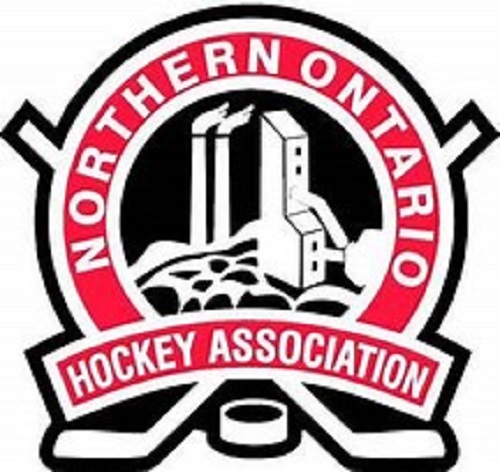
More likely than not, boys rep hockey in northern Ontario will have a noticeably different look, beyond simply the COVID protocols that may be enacted, when the 2021-2022 season kicks off this fall.
Traditionally, AAA hockey has served as the only level of minor hockey whereby single league play covers the entire spectrum of the NOHA (Northern Ontario Hockey Association). Come October, it seems that AA teams from Hearst to Sault Ste Marie, from Timmins to Sudbury and over to North Bay will all be gathered under the umbrella of the Nickel District Minor Hockey League.
Unbalanced regionalized schedules have been proposed at the U11, U13 and U15 age categories, a response to falling numbers in general, the geographic realities of the NOHA, mixed in with the effects of the current pandemic.
“In 2019-2020, we had a number of teams that for different reasons played outside of the NOHA,” noted Executive Director Jason Marchand. “Some travelled to Michigan, some to Quebec, some to Muskoka and Parry Sound. In some cases, this was due to a lack of options in terms of a viable league within the NOHA.”
“With COVID-19, we had an understanding that there might be more limited travel options moving forward - and that kind of started the conversation.”
It’s a conversation that, by its very nature, involves an element of give and take, a need for associations who benefit from a solid core of potential opponents within a closer proximity to avail themselves to greater travel for the common good.
In fact, by the time the charts of the various schedules had been completed, with the ability to offer a comparison to the landscape that existed for all NOHA AA teams in 2019-2020, the results spoke volumes, at least to the board of directors of the NOHA.
The proposed schedules would lessen the overall cumulative travel of teams by some 6000kms, though it should be noted that substantial decreases at U13 and U15 are offset, to an extent, by the fact that there would exist an increase of roughly 800km at the U11 bracket.
While the NOHA is not in the least oblivious to the fact that this is not an ideal option for each and every AA team under its jurisdiction, it quite correctly notes that it is guided by more broad spectrum concerns. “Our mandate is to provide programming for all teams within the NOHA,” said Marchand.
“It is our responsibility to ensure that all teams within the NOHA have a place to play, within the NOHA.”
Though this directive might come as a surprise to some, the man who has worked in the North Bay offices for almost 15 years suggested that steps were taken to ensure full transparency regarding the NOHA board discussions.
“Over the course of the summer of 2020, we did a number of presentations in order to provide updates on what a return to hockey might look like,” said Marchand. As most in these parts are fully aware, on-ice game and practice activity for the 2020-2021 season was extremely limited, squeezed into a mid-October to mid-December window that was buffered by provincial lockdowns on each side.
“In the fall, we were able to get some teams on the ice, so that became our focus,” stated Marchand, addressing one of the criticisms that he has heard that associations might not have realized to what extent these new proposals were earmarked to start this coming September/October.
“We had a bit of a lull (in early 2021) when it became apparent that we would not have any kind of normal hockey season,” he continued. “As the season came to an end, volunteers were not being taxed as much and so we reengaged our organizations with these plans.”
The fact is that many could see this next step coming. Where years ago, the NDMHL could easily compile ultra competitive schedules simply with an array of teams from what is now the City of Greater Sudbury (those of us that are old enough can recall when the NDMHL and the SMHA operated their own leagues, completely independent of one another), boundaries have been stretched over time.
Entries from North Bay, Manitoulin Island, Elliot Lake and an array of teams representing the Sudbury District Girls Hockey Association have become commonplace on the NDMHL schedules in recent years. In 2019-2020, local bantam (U15) squads faced opponents from Timmins and Sault Ste Marie, from time to time.
As the scope of the NDMHL is expanded, so too is the collaborative work that must be done in concert with NOHA officials. “We need to provide greater support for our leagues,” said Marchand. “Not to run them or manage them, but to provide support given the possibility of fewer players.”
“Our intent was not to mandate changes, but we do have to provide programming. That is extremely important.”
Some might suggest that you can not accomplish the latter without resorting to the former.
Beyond the concerns that have been raised for increased travel for teams that previously could live with nearby opponents, a challenge that clearly affects Sudbury and area teams more than any other centre across the NOHA, Marchand did acknowledge that the issue of games involving both the minor and major AA teams, from the same association, at the U15 level was also voiced.
“Where this does occur, we tried to put the games towards the latter part of the season, by which time the U14 kids have had the opportunity to participate in games with body checking,” he said. “We’ve also talked about increased education regarding the coaching of the body checking skill.”
Furthermore, he went on to say that for a great many years, participants at the U15 level (formerly bantam) have often intermixed, such that a good number of the rep teams across the NOHA would have long included both U14 and U15 talent competing together.
In the end, as one local executive confided with me, if this is the direction that the NOHA sees fit to pursue, best to try and work together to minimize the negatives than be dragged along, kicking and screaming every step of the way.
“We created a template; nothing is finalized yet,” stressed Marchand. “We’ll do whatever we can to support this and make it work, and we recognize that there might be adaptations that we need to make in year two, three or four - but we’re confident that it can work.”
And while not everyone involved in AA hockey in these parts is prone to agree, this does appear, as a general concept, to be a fait accompli as minor hockey looks to resume in the fall.






